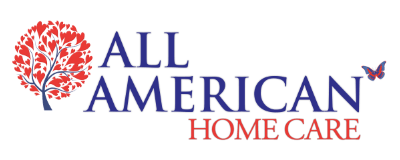Easy Guide to Home Safety for Elderly
Ensuring home safety for elderly loved ones is a top priority for families. As older adults age, their homes can present new challenges and risks. Making simple changes to the loved one’s home can significantly prevent falls and create a more secure living space.
This guide provides essential home safety tips to help you protect the people you care about.
Table of Contents
Why Home Safety is Crucial for Older Adults
For older adults, the home should be a place of comfort and security. However, it can also be where many accidents happen. Statistics show that falls are a leading cause of injury among older people. A simple trip hazard can lead to serious injuries that impact their health and independence.
By focusing on home safety for elderly individuals, you can create a safe environment that allows them to live confidently and independently for longer. This proactive approach helps reduce the falls risk and gives everyone peace of mind.
Preventing Falls: The Top Priority
Falls are the most common and serious threat to older adults in their homes. Here are some key home safety tips to prevent falls.
- Clear pathways: Make sure all walkways are free of clutter. Remove any boxes, stacks of magazines, or other items that could cause a trip hazard.
- Remove throw rugs: Small rugs can easily slip and cause a fall. It’s best to remove them or secure them to the floor with double-sided tape.
- Install night lights: Place night lights in hallways, bedrooms, and bathrooms. This simple addition helps older people navigate their home safely at night, when falls risk is highest.
- Arrange furniture safely: Make sure there are clear, wide pathways between furniture. Avoid placing chairs or tables in high-traffic areas.
- Fix uneven surfaces: Repair loose floorboards, torn carpeting, or uneven tiles. This helps eliminate potential tripping spots.
Bathroom Safety
The bathroom is one of the most dangerous rooms for older adults due to wet surfaces and small spaces. Here’s how to make it safer:
- Install grab bars: Place grab bars near the toilet and in the shower or bathtub. These provide a sturdy handhold for balance.
- Use non-slip mats: Place non-slip mats on the floor of the shower or tub and on the bathroom floor.
- Consider a raised toilet seat: A raised toilet seat makes sitting down and standing up easier, which reduces strain and the falls risk.
- Ensure proper lighting: A bright light switch that’s easy to reach can make a big difference.
Kitchen and Living Area Safety
These are the most used areas of the house, so they need to be safe and easy to navigate.
- Secure electrical cords: Tape electrical cords down or use cord covers to keep them from becoming a trip hazard.
- Good lighting: Ensure all rooms are well-lit. Use a combination of overhead lights and lamps.
- Easy access: Store frequently used items on lower shelves where they can be reached without a step stool.
- Check appliance safety: Make sure all appliances are in good working order.
Fire and Electrical Safety
Fire safety is a crucial part of home safety for elderly individuals.
- Install a smoke detector: Install a smoke detector on every level of the home and in sleeping areas. Test them monthly and replace the batteries yearly.
- Check carbon monoxide detectors: Install carbon monoxide detectors, especially near sleeping areas. This is a vital step as carbon monoxide is an odorless, colorless gas.
- Adjust water heater temperature: Set the water heater temperature to no higher than 120°F (49°C) to prevent scalding.
The Importance of Home Care Assistance
Even with a safe home, some older people may need extra support. A professional home care provider can be an invaluable asset. They can help with daily tasks, provide supervision, and assist with mobility, all of which further prevent falls and create a safer environment.
A caregiver can also help a family member spot potential new risks and ensure that safety measures are followed consistently in the loved one’s home.
Final Steps to a Safer Home
Taking the time to address these home safety tips is one of the best ways you can support an older adults as they age. Involving the individual in these changes is also important to respect their independence and preferences.
Regularly checking the home for new hazards is a continuous effort that can make a huge difference. By being proactive, you can help an older adults live safely and confidently in their own loved one’s home.
At All American Home Care, we are committed to helping you and your family navigate the journey of aging with confidence. To learn more about our philosophy and how we support individuals, explore our dedicated home care services designed to cater to your unique needs.
Related Articles:




